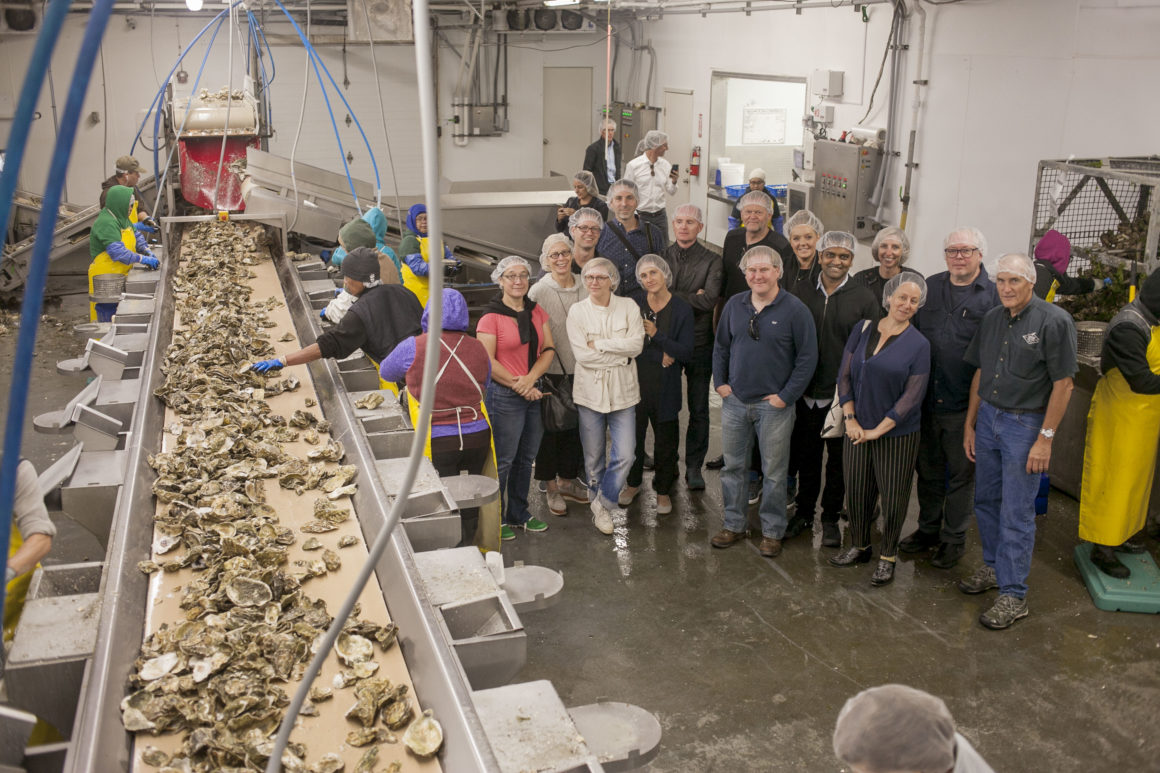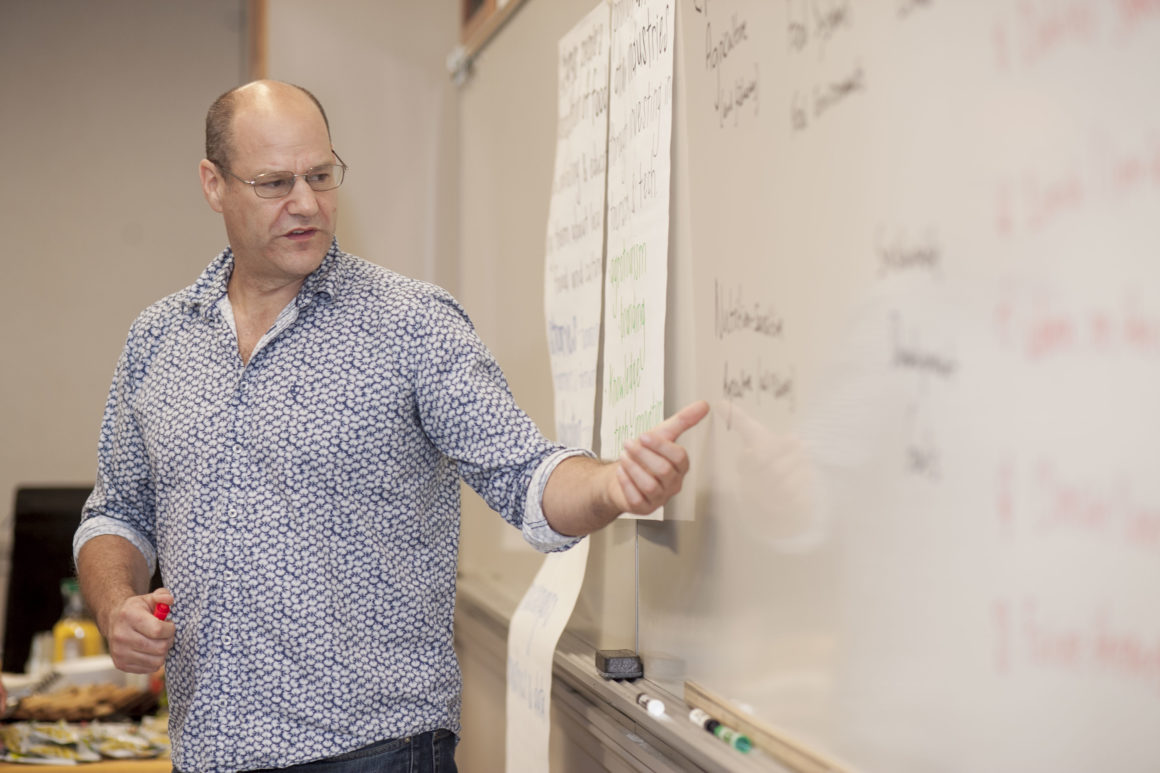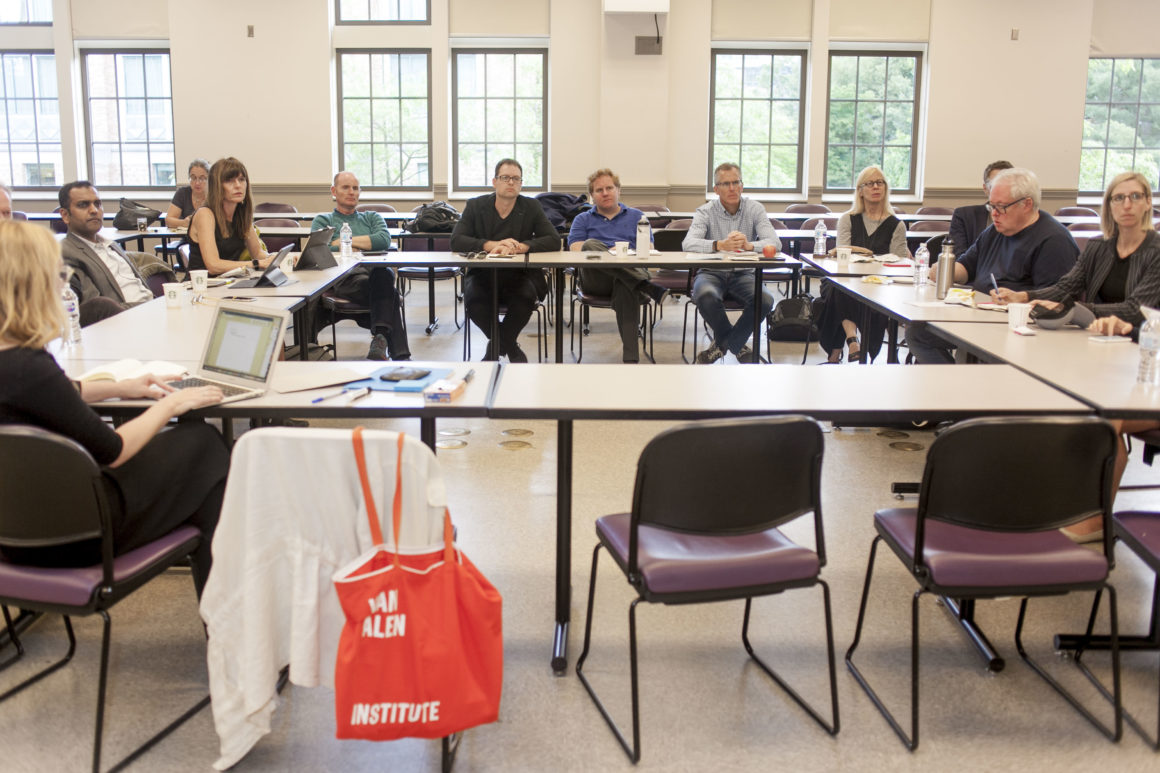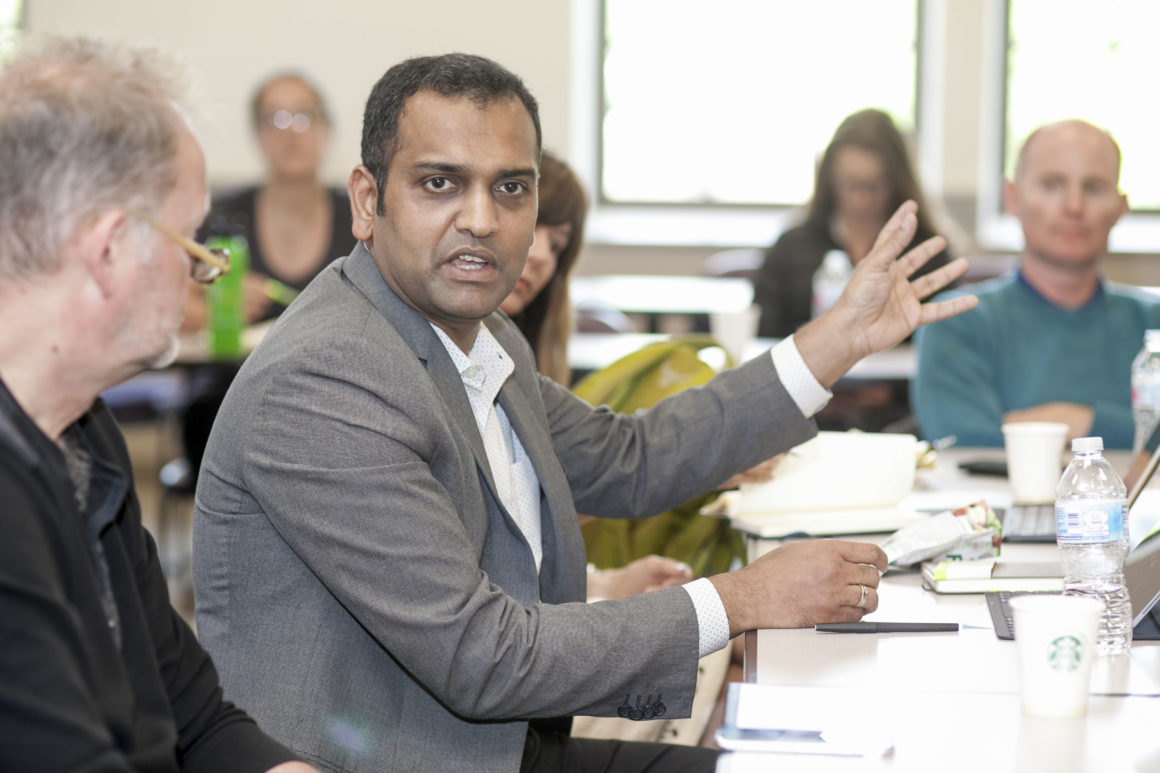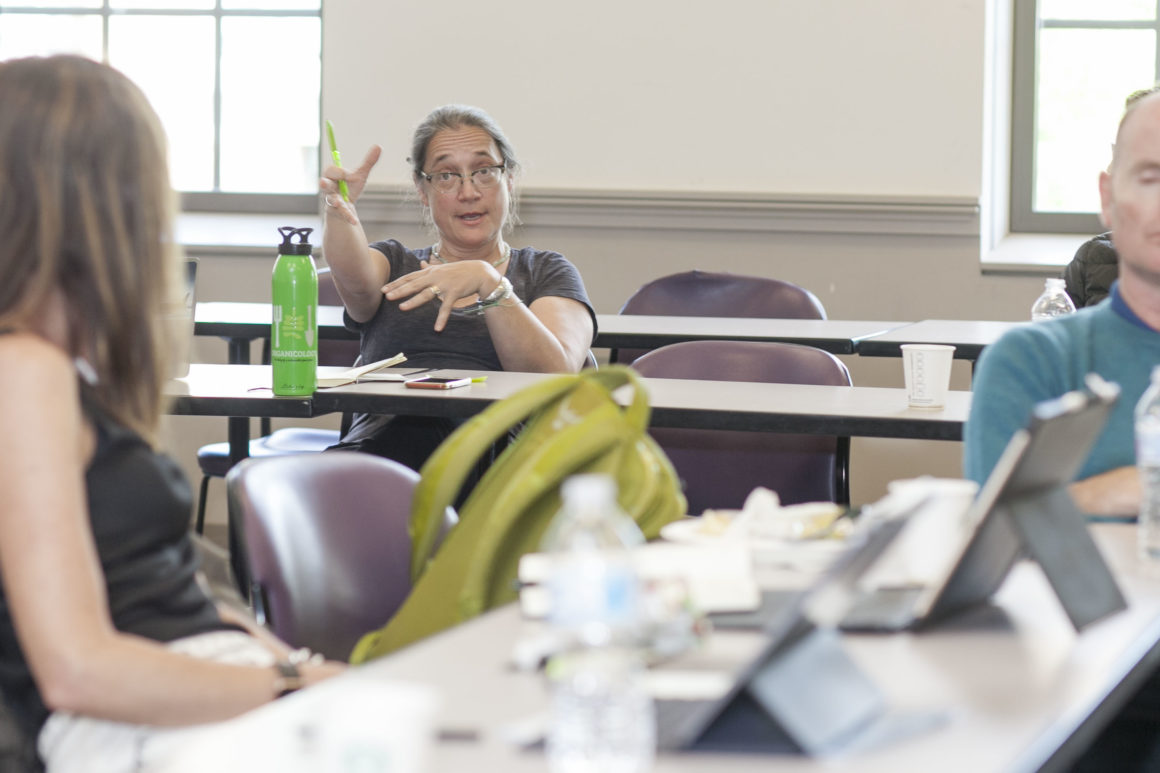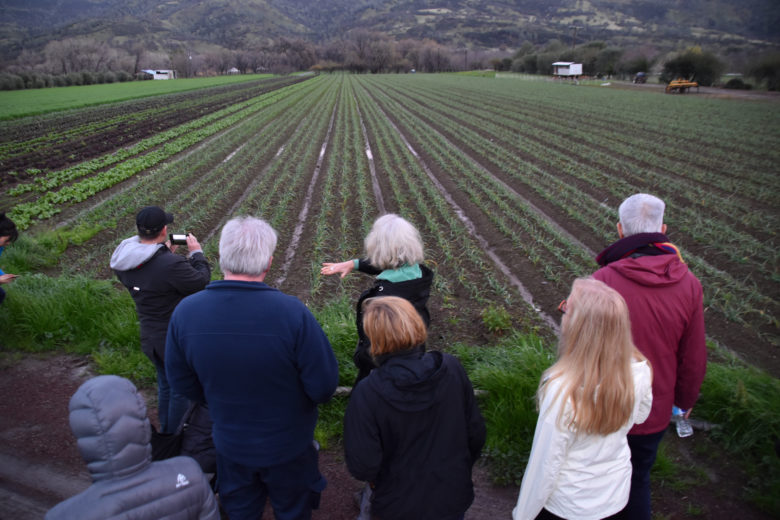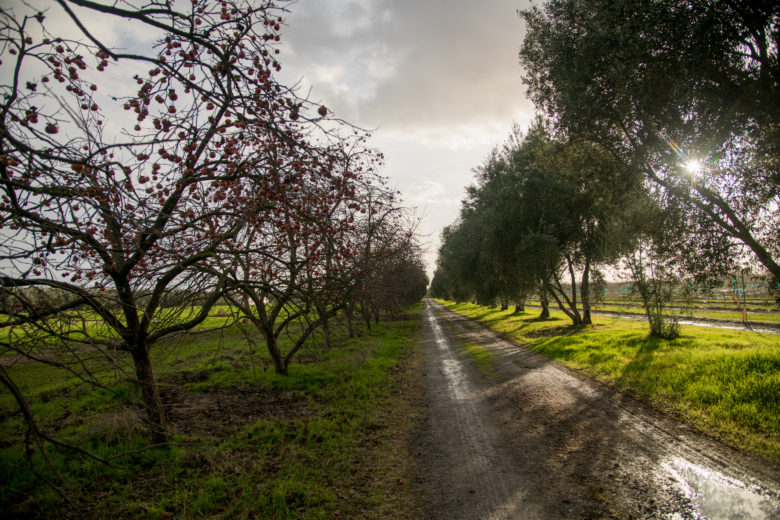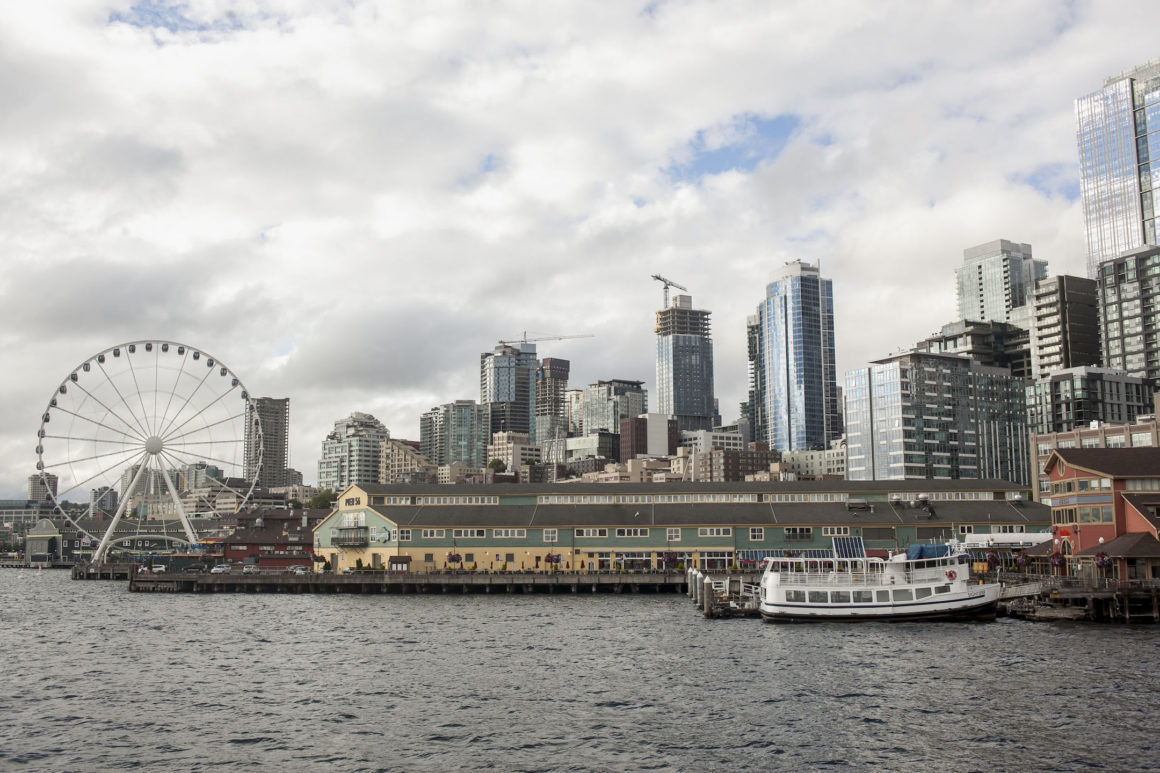
With bustling waterfronts, famous seafood markets, a robust culinary scene, and an estuary rich with marine life, the Puget Sound region seems to be the picture of seafood security. But look closer at the web of people, the sea, and the climate, and the fragility and vulnerability of this system comes to light.
Over a three-day trip, from July 17-19, 2019, Van Alen Climate Council members visited this region to explore the seafood supply chain from ocean to table. The Seattle trip comes on the heels of the Council’s first installment of “Designing the Future of Food” in California’s Central Valley, where they saw firsthand the complex interplay of structural, social, and environmental issues that underpin the agricultural system. In Seattle, the Council shifted their focus from land-based agricultural systems to engage in a systems assessment of the seafood supply chain.
Through site visits and cross-disciplinary conversation, the group came to understand the intimate relationship between food security and climate change in the Puget Sound. Visits led the Council backwards, from the table to the ocean: They first connected with chefs and fish traders, then processing and distribution facilities, and ultimately with the seafood-growing sites on Hood Canal and the natural fish habitats off the Seattle waterfront.
Edward Allison, a professor at the University of Washington’s School of Marine and Environmental Affairs, co-led the program with commercial fisherman and sustainable seafood consultant, Amy Grondin. Together, they guided the Council through an exploration into the role fisheries play in food security and how that role may change in the context of climate change.
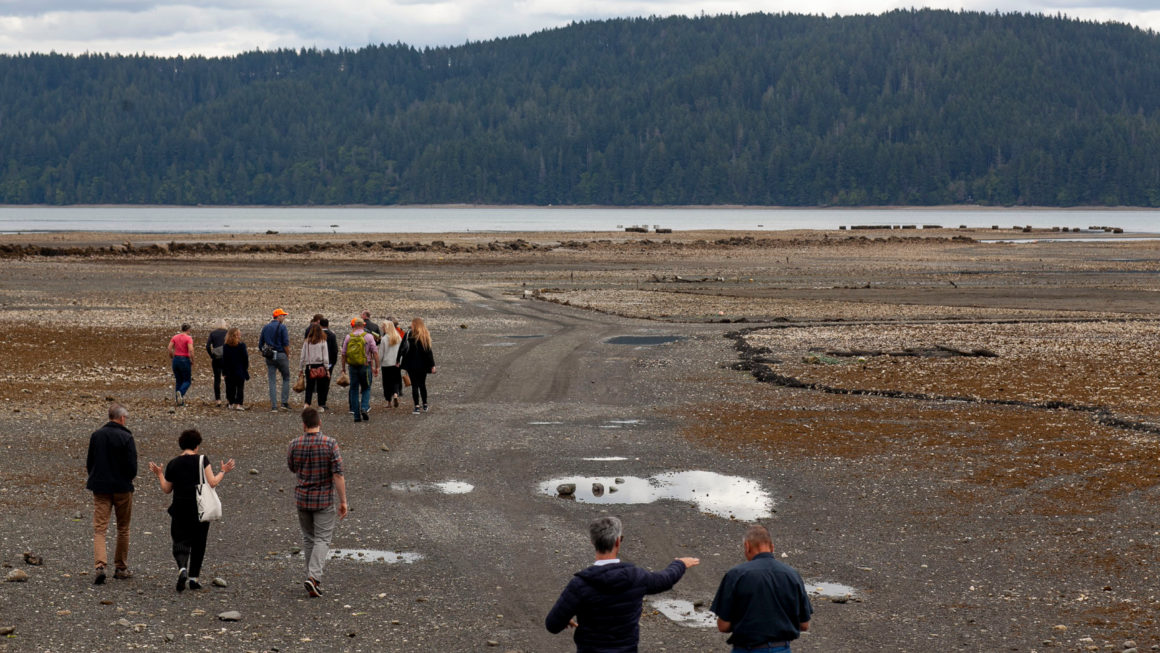
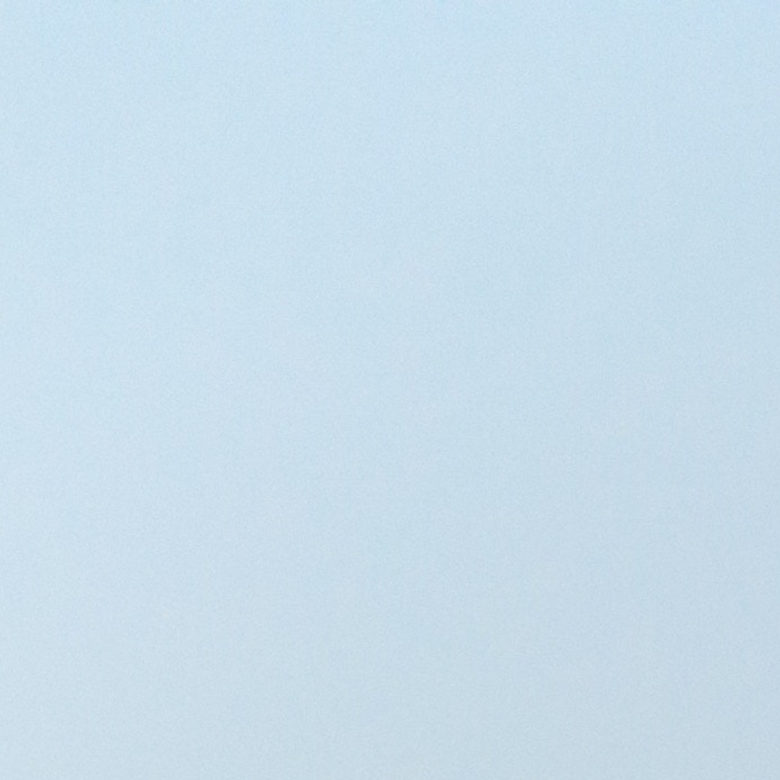
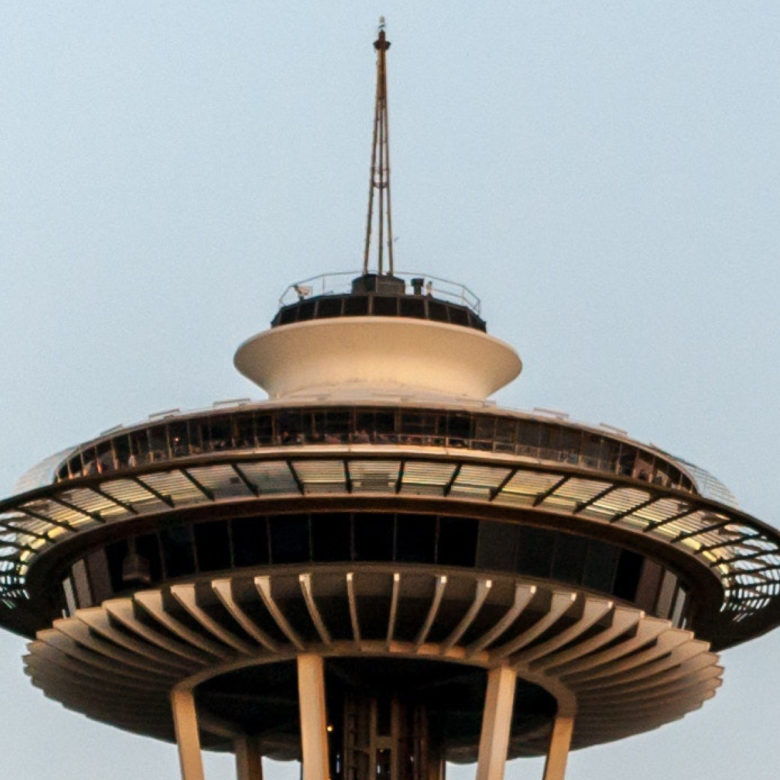
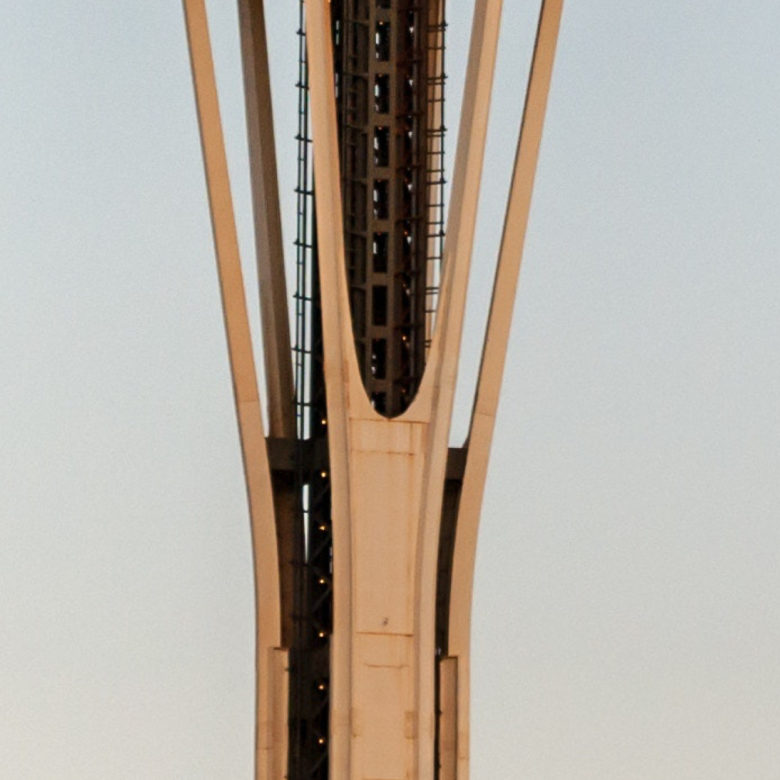
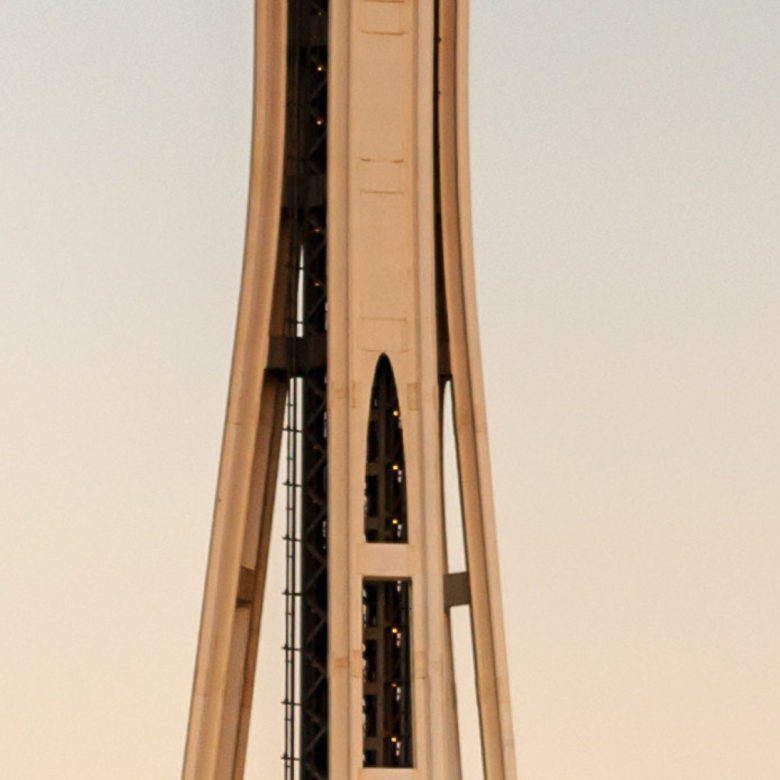
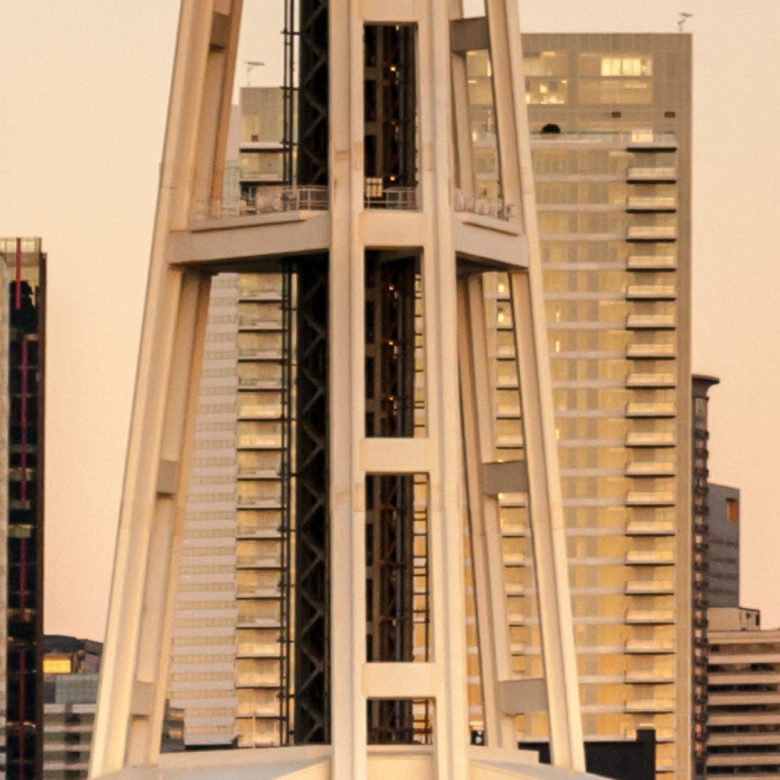
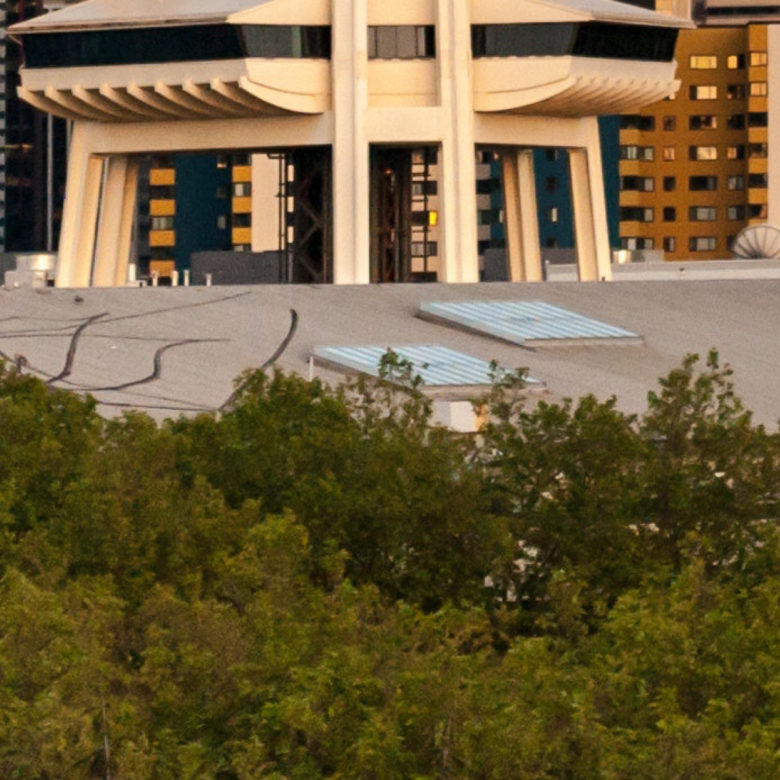
UNIVERSITY OF WASHINGTON
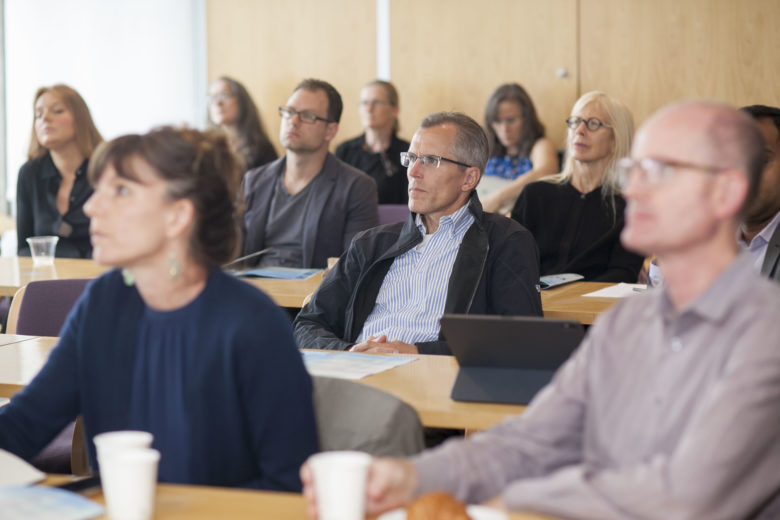
The Council spent their first morning in Seattle at the University of Washington (UW) receiving a crash course in climate science and fisheries management.
Dr. Cecilia Bitz, chair of UW’s Department of Atmospheric Sciences, talked about how the Puget Sound and Pacific Northwest is experiencing—and projected to experience—climate change. She warned the Council that we have “only experienced a fraction of what we may see in the future.” This grounding and humbling opening reminded the Council of why this work is so important, and so urgent.
The group then heard from Meg Chadsey, Ocean Acidification Specialist for Washington Sea Grant, the UW chapter of a national program administered by the National Oceanic and Atmospheric Administration (NOAA). She echoed Bitz’s concerns and introduced the Council to the sobering realities of ocean acidification (OA). Chadsey explained that the Puget Sound region’s booming shellfish industry raised alarm in the early 2000s when larval oysters in shellfish hatcheries were failing to survive. As it turned out, what Chadsey called a “triple whammy” of ocean conditions made the region “Ground Zero” for ocean acidification at the time: an increase in atmospheric carbon dioxide levels, human pressures on a sensitive estuarine environment, and upwelling of naturally carbon dioxide-rich deep water to the surface. Together, these conditions sometimes made the waters of Puget Sound too corrosive for the vulnerable larval oysters; their delicate calcium carbonate shells were simply dissolving in the acidified seawater.
However, Chadsey suggested there are reasons to be optimistic about our capacity to mitigate the problem. She is part of a team investigating the potential of kelp aquaculture to improve water quality, create critical marine habitat, and grow food, all while taking carbon dioxide out of the acidified waters of the Puget Sound.
Other newly-developed tools could also help mitigate the impacts of ocean acidification. For example, Parker MacCready of UW Oceanography demonstrated the LiveOcean model, a tool he likened to “a weather forecast for the ocean,” which is helping fishermen and growers understand and adapt to ocean conditions that can threaten the health of shellfish. The model has other applications beyond ocean chemistry readings; it can also model harmful algal blooms (HABs) that can render culturally and economically significant razor clam toxic, and it has also been used to model the spread of invasive European Green Crab.
The Council quickly grasped that there are many losers in the fight against climate change. But as Dr. Alan Haynie of the NOAA Alaska Fisheries Science Center told them, “The simple answer is wrong.” He emphasized the need to investigate global climate models on a regional scale to better understand the balance of losers and winners, as the regional story is often more complex than initially meets the eye.Solving problems associated with food security and climate change involves multiple systems operating in a complicated web of interactions that left some Council members feeling more baffled than ever. For example, Allison highlighted the contradictory narratives being told about the role of fish in global food and nutrition security. His work, along with that of others, has found that people in general are eating more protein than needed, and the role of fish is perhaps most critical when considering its ability to provide micronutrients essential for healthy development and life.
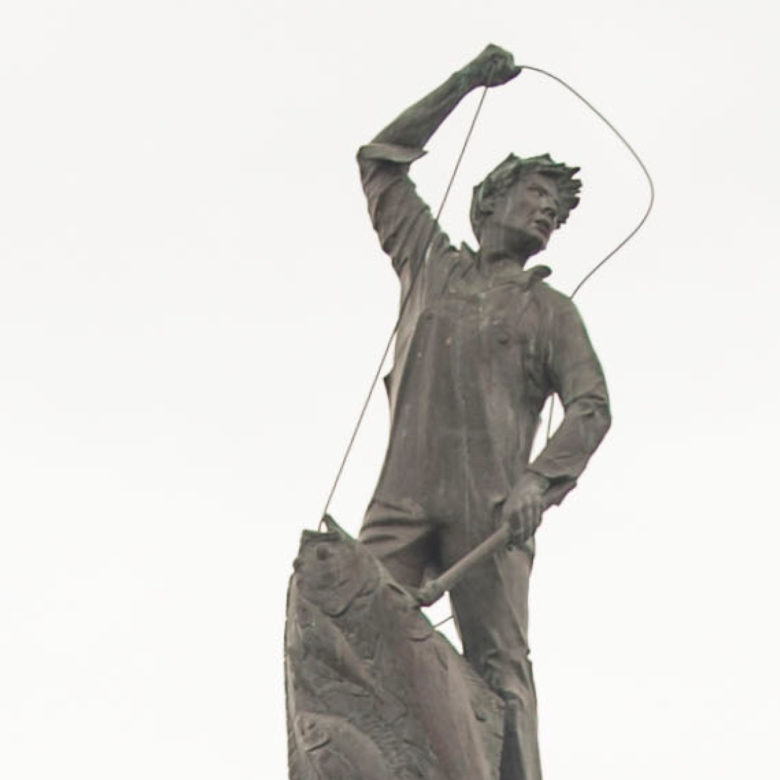
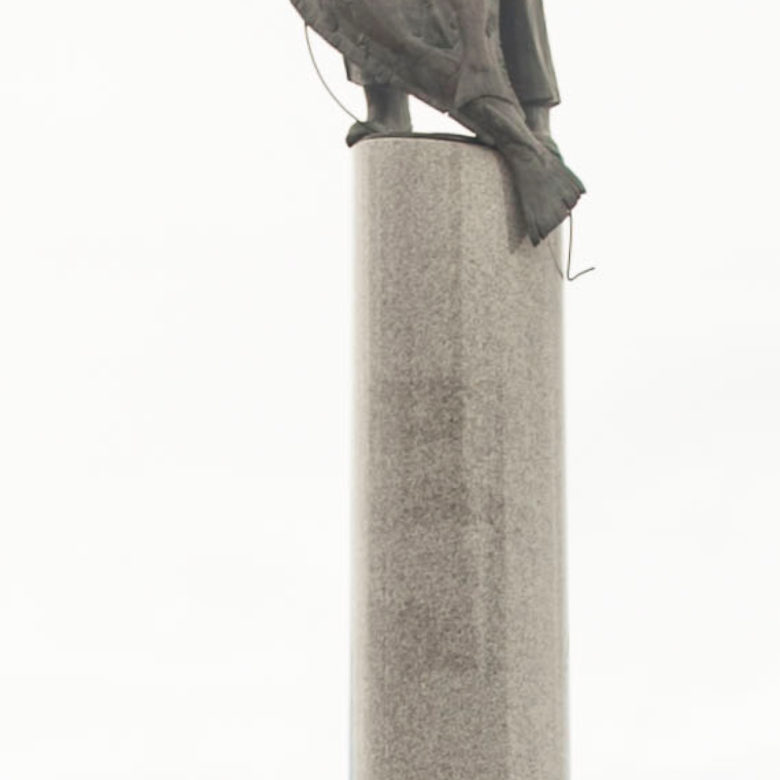
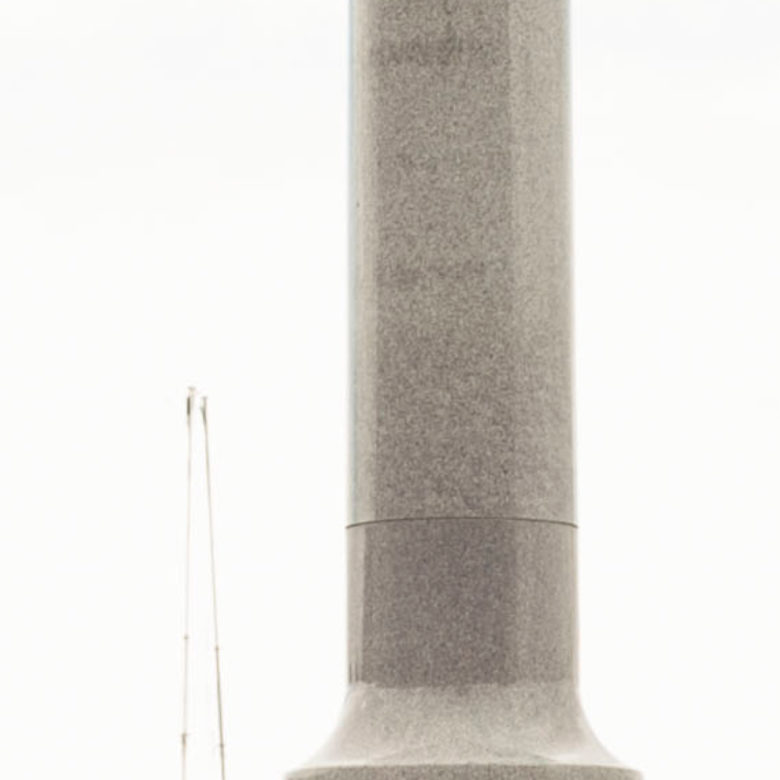
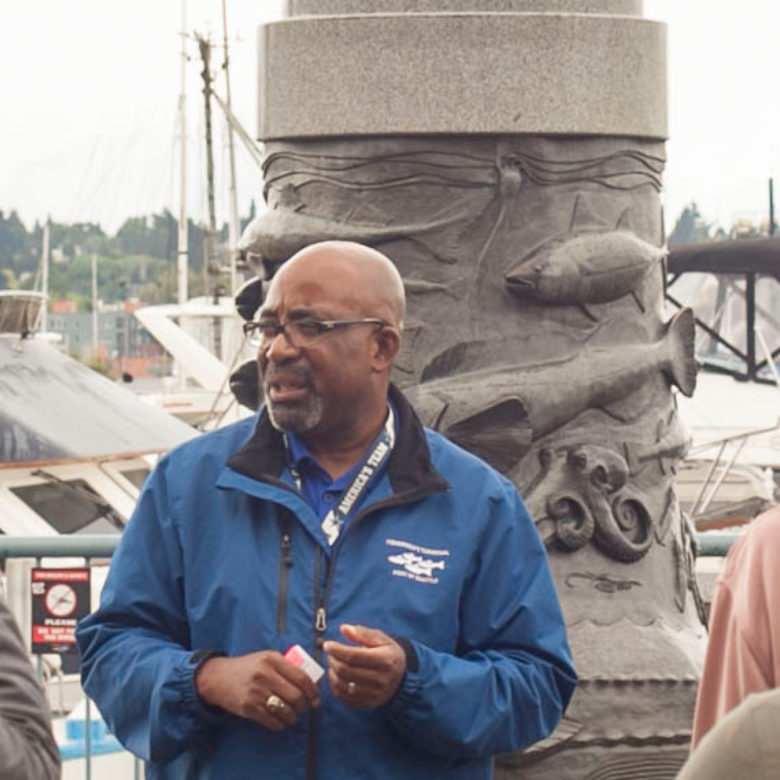
FISHERMAN’S TERMINAL
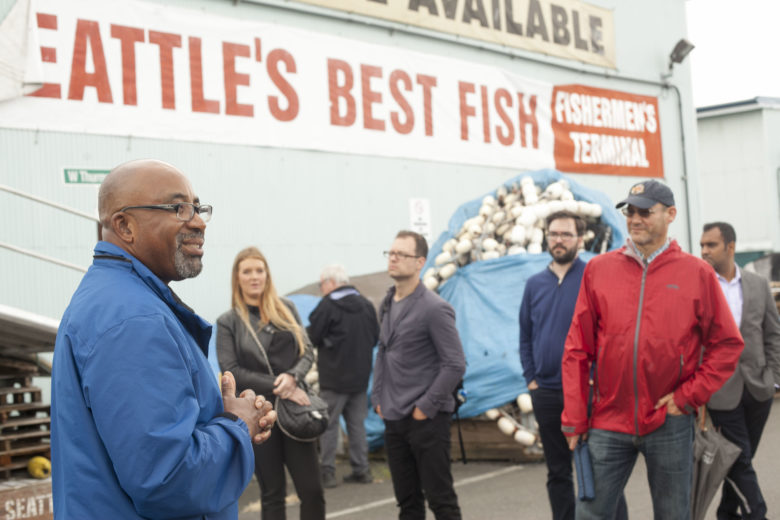
Over a seafood lunch at the Port of Seattle’s Chinook’s restaurant, the Council heard from the Quinault Indian Nation’s Legislative Aide, Tanya Eison. Due to changing climate conditions, the Quinault are facing serious sea level rise and risk tsunami inundation. Tanya told the Council it has come “time to look for a new family home,” perhaps one without perpetual seafoam on the roof. While the first phase of a Master Plan breaks ground this summer, Tanya says convincing tribal members to move to higher ground is a challenge. They have already faced fishery closures, including the closure of their prized sockeye run. While adaptation looks like new homes and alternate fish stocks, Tanya says, “It’s just not the same.”
After lunch, the Council toured the heart of Seattle’s commercial fishing operations at the Port of Seattle, where Eddie Allison’s tales of coastal squeeze displacing communities from historically working waterfronts rang true. With the commercial fleet up fishing in Alaska and a rainy summer sky looming overhead, the Port felt quiet and strangely empty. However, Port authorities Delmas Whittaker and Kelli Goodwin told the group it’s that perception of underutilized space that threatens to have development pressures overtake the Port’s critical maritime real estate. Without this critical maritime hub, getting seafood to the tables of Seattleites becomes evermore challenging and costly.
The Port hopes to inspire the next generation of maritime workers by transforming the historic Ship Supply building into a Maritime Innovation Center. The new LEED silver building will offer a variety of services designed to help catalyze innovation within the community by providing education, training, business services, and fostering connections.
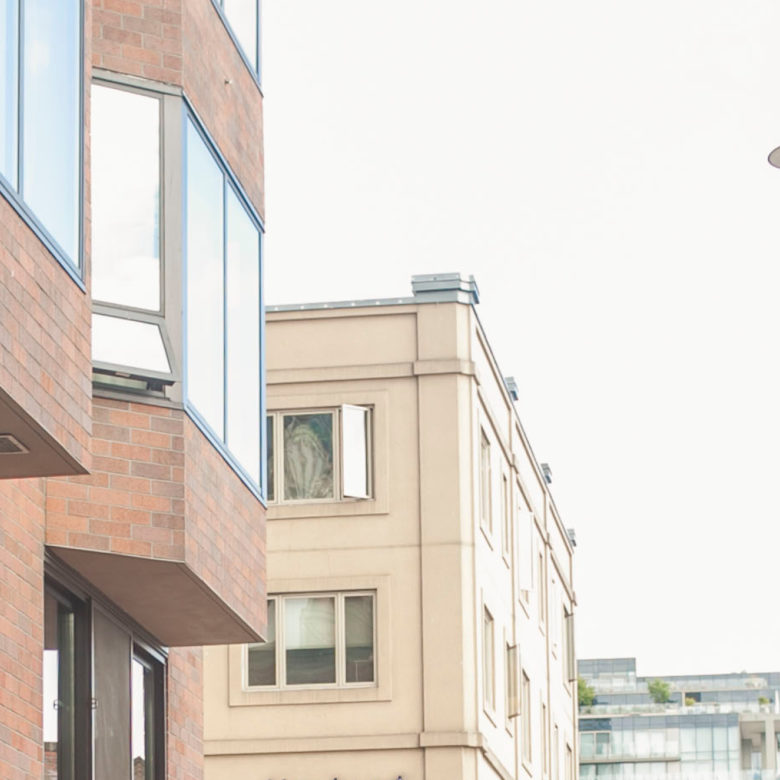
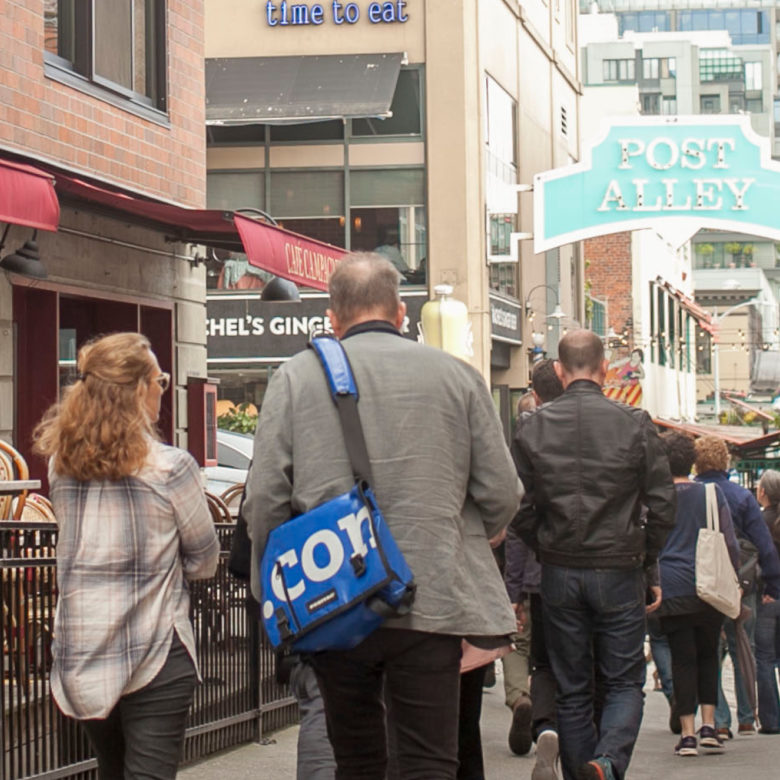
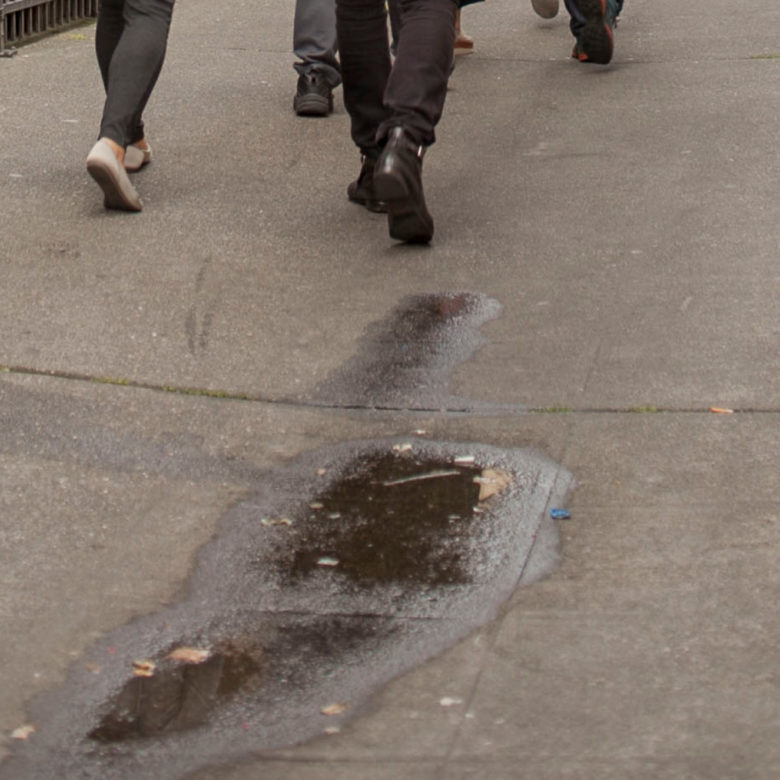
ORFEO/PIKE’S PLACE
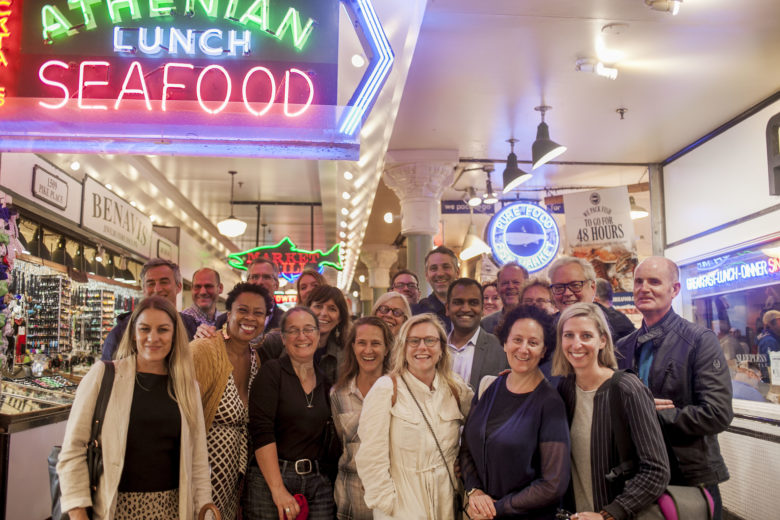
The group ducked out of the rain and warmed up after their Port tour at Orfeo. Over coffee and donuts, the Council heard from Chef Kevin Davis about his approach to integrating sustainable practices into the future of restaurant culture.
This sparked a discussion led by Amy Grondin, alongside local fish traders and chefs, about efforts to improve the seafood supply chain and respond to changing climate conditions. Panelists included Eddie Allison, Jack Cheney (Sourcing Manager, Real Good Fish), and Chef Kristi Brown (That Brown Girl Cooks!). Conversation kept circling back to a recurring theme: the need for culinary creativity, innovation, and diversity both on the plate and throughout the supply chain. As Amy said, “If everyone around you looks the same, that’s a problem. In the same way, if everything you eat looks the same, that’s also a problem.” This lack of culinary diversity is behind the need to create markets for so-called “trash fish” and promote variety in the seafood hitting our plates.
So what’s hitting our plates now? The Council ventured down to Pike’s Place to see what Seattle’s famous fish market had to offer. The group had a chance to mingle with panelists, talk with fish traders, and feast with their eyes on the spectacular display of Northwest seafood.
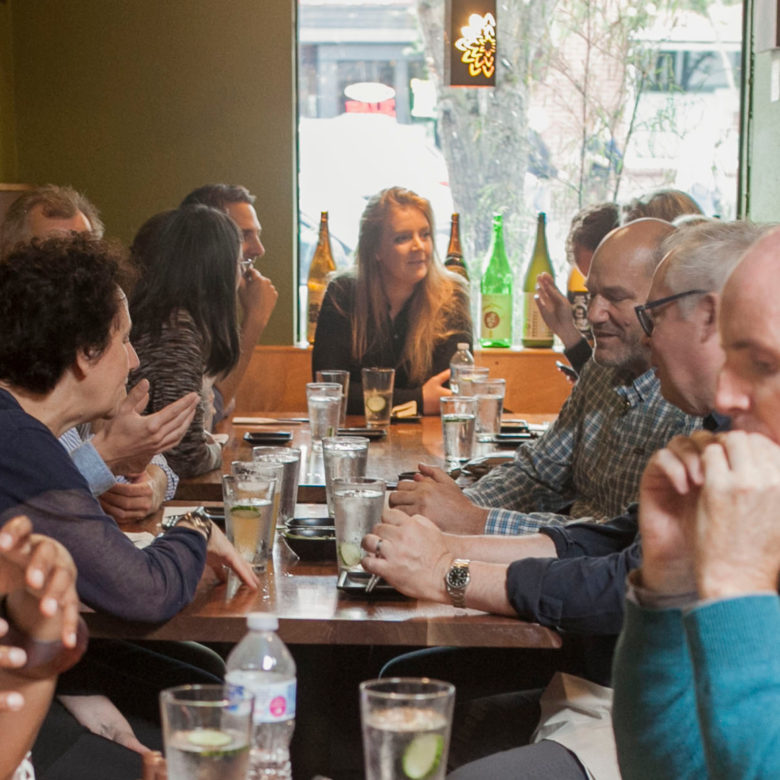
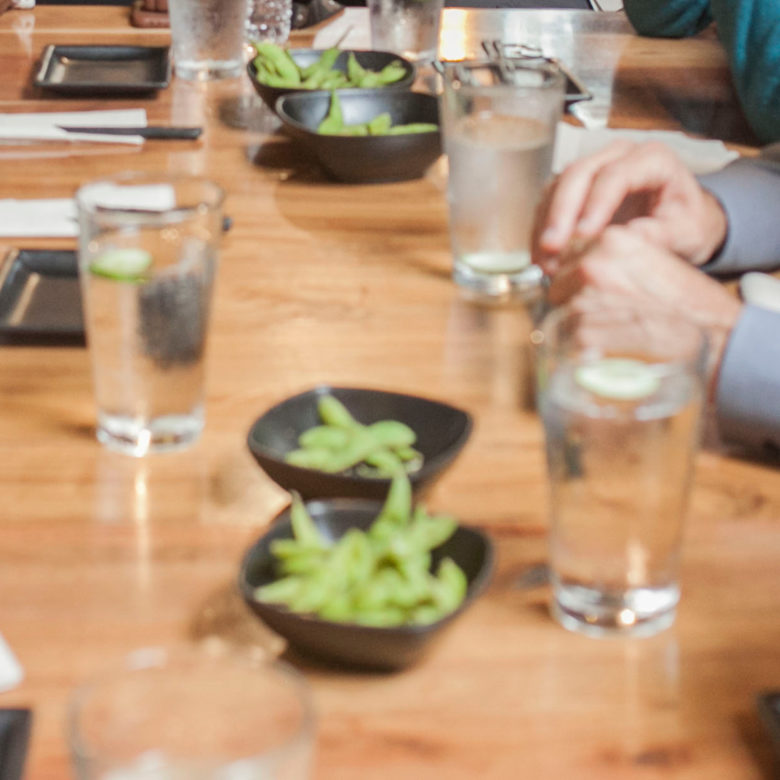
MASHIKO
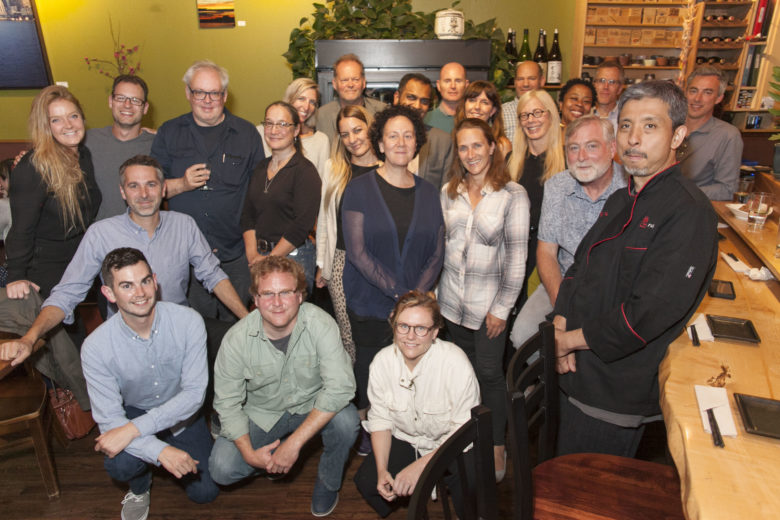
At the end of a long, informative day of exploration, the Council ferried over to West Seattle to Mashiko Japanese Restaurant for a six-course sushi dinner. Owner Hajime Sato, along with Chef Mariah Kmitta, shared his radical approach to disrupting culinary tradition in favor of sustainability. Since 2009, Sato has been committed to sourcing ethically produced and traceable ingredients, avoiding overly fished species (such as bluefin tuna), and reducing food waste. Dinner at Mashiko was a glimpse into the possibilities awaiting a more sustainable future of food.
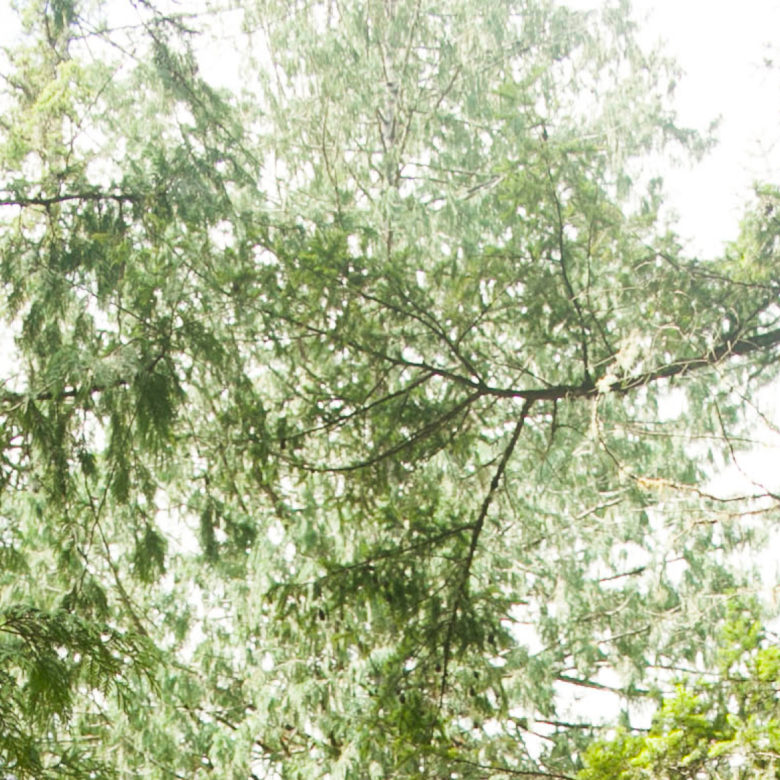
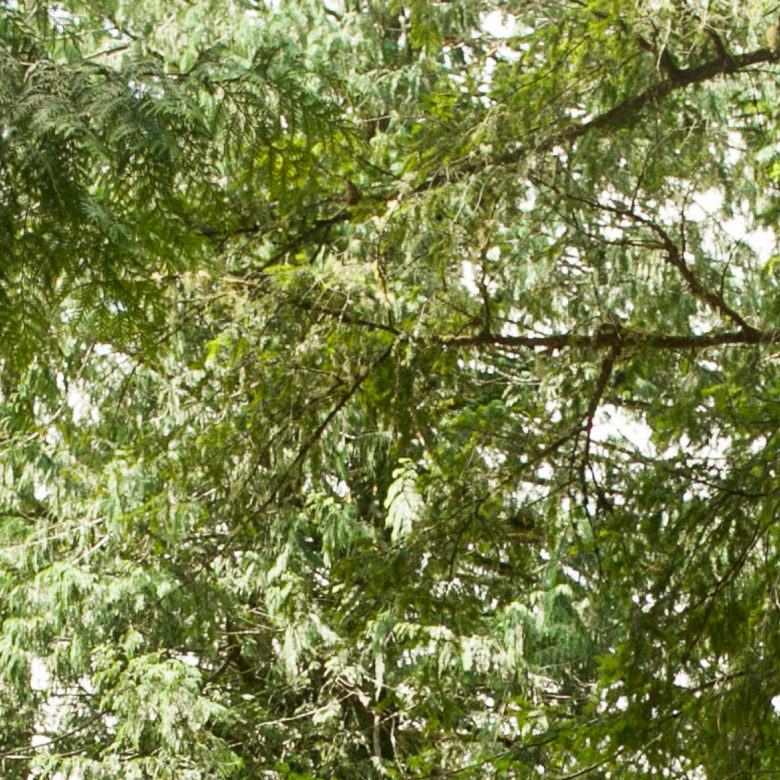
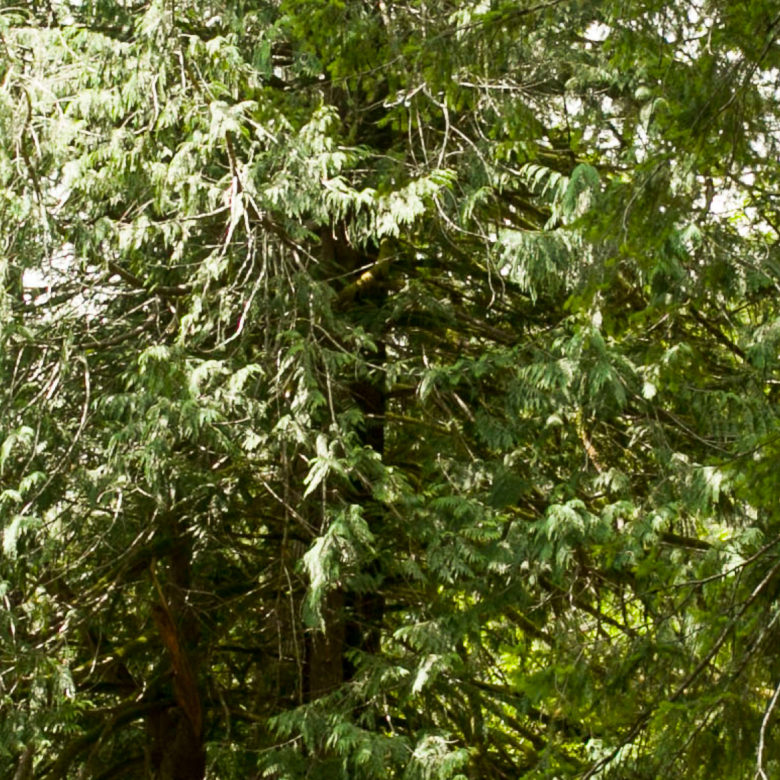
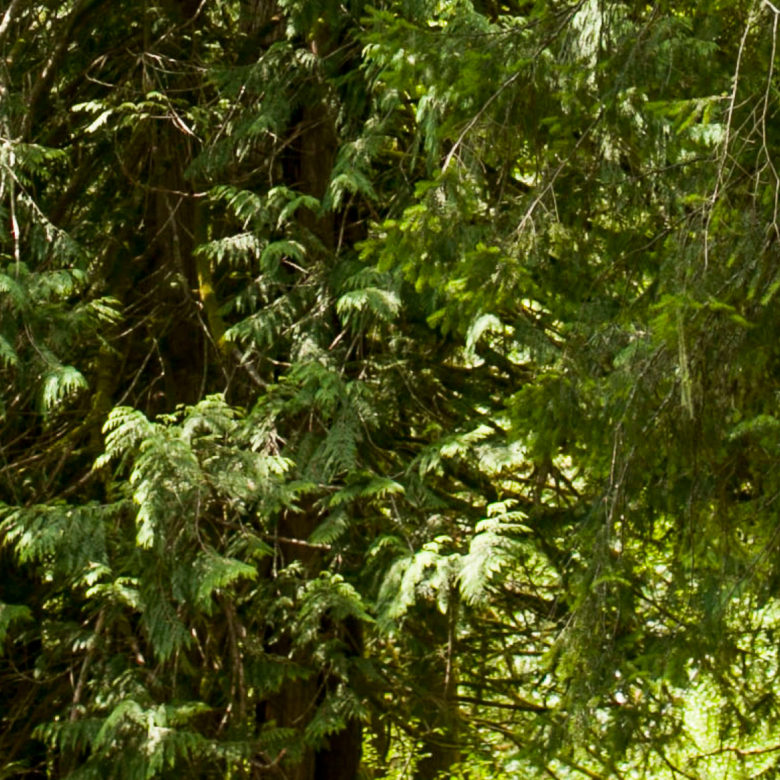
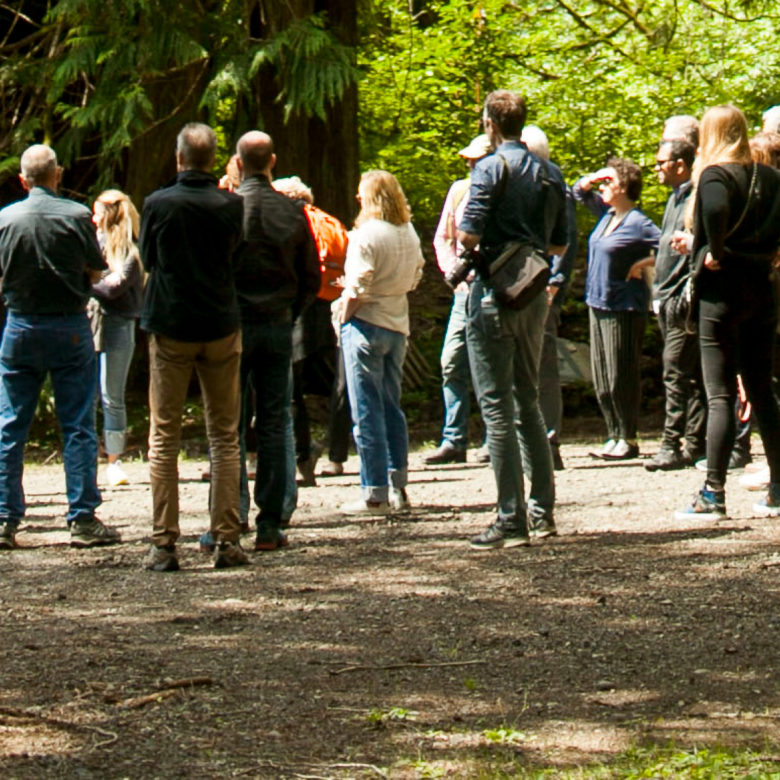
TAYLOR SHELLFISH/HAMA HAMA/LONG LIVE THE KINGS
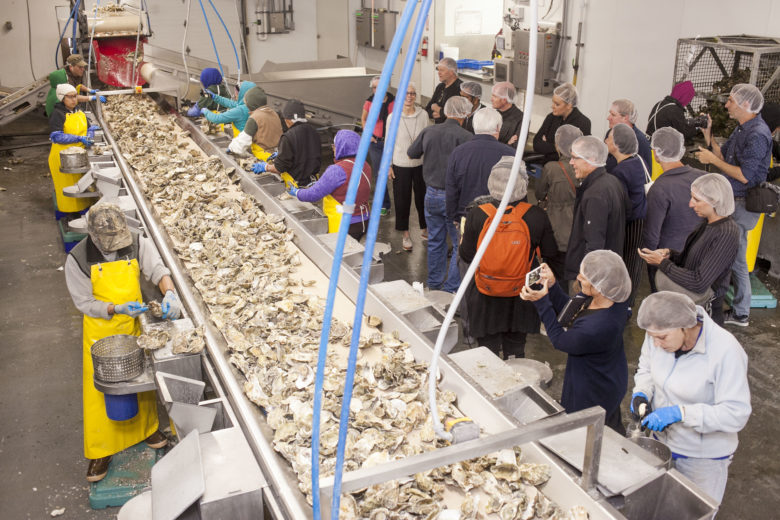
The next morning, the Council was up early to continue working backwards through the seafood system. They ventured beyond Seattle proper to Hood Canal, the westernmost basin of Puget Sound, east of the Olympic Mountains. Their visits brought them pre-plate, to seafood processing and distribution facilities, and ultimately to the seafood growing sites on Hood Canal.
The Council saw and heard the stories of climate impacts to the region during visits to prominent shellfisheries and aquaculture sites that serve the Puget Sound markets. Starting south and progressing northward, the council visited Taylor Shellfish’s processing center and hatcheries, a fifth generation business and the largest producer of shellfish in the country. They then stopped at the Long Live the Kings Finfish Hatchery, stewards of the region’s endangered salmon and steelhead populations. Last came a tour of the growing flats at the family-owned Hama Hama Oyster Saloon.
The Hood Canal’s incredible biodiversity, including its salmon and steelhead populations and prime growing conditions for oysters and other shellfish species, has made it both the source of Seattle’s seafood culinary scene and of great local pride. However, as OA expert Meg Chadsey outlined during Day 1, the Puget Sound region is warming and acidifying at a greater rate than the global trend. This has serious ramifications for the entire marine food web, from salmon to seals to killer whales. “I’ve seen the decline here firsthand,” said Rick Endicott of Long Live the Kings. “It’s pretty hard to watch.”
Competition for space in the built environment was nothing new to the Council members, but taking the competition to the water was a first. As the demand for seafood increases and shellfish production expands, new aquaculture operations are popping up offshore, on land, and even in the lab. After seeing the sophistication of the oyster hatcheries, one Council member was heartened. “I started out on Tuesday thinking that there were going to be no more oysters,” he reflected. “And then you go to this thing and it’s almost like it’s Frankenstein’s lab! You can imagine them actually cutting the cord with the natural world entirely and doing this in a giant chemistry set.”
Cutting that cord felt unsettling to other members, who worried about “becom[ing] so reliant on these man-made systems that we forget about the [natural] habitat.” But as with Chadsey’s kelp investigation, it may be possible to work within the natural seascape to mitigate OA impacts, and thus keep the cord intact.
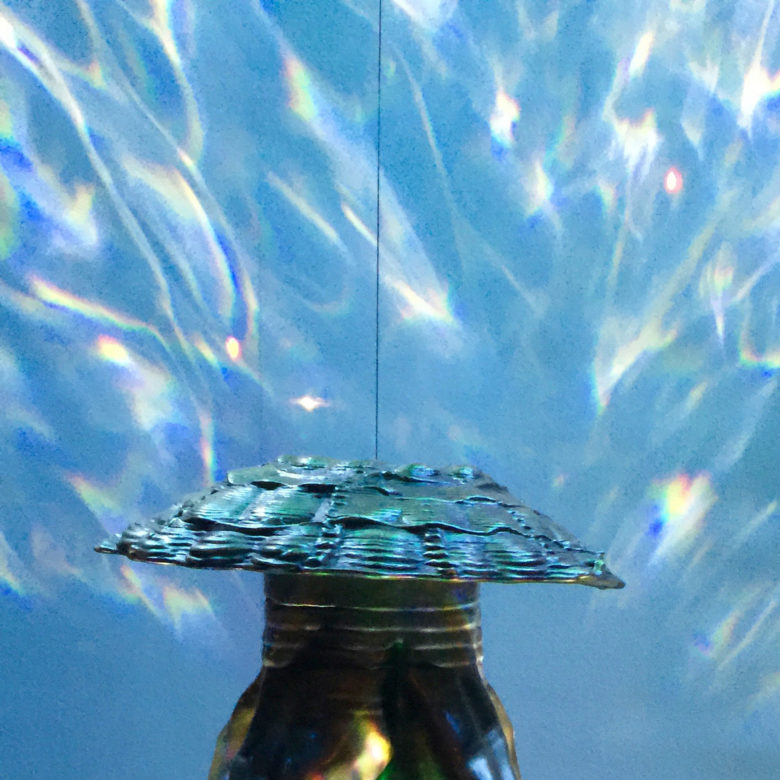
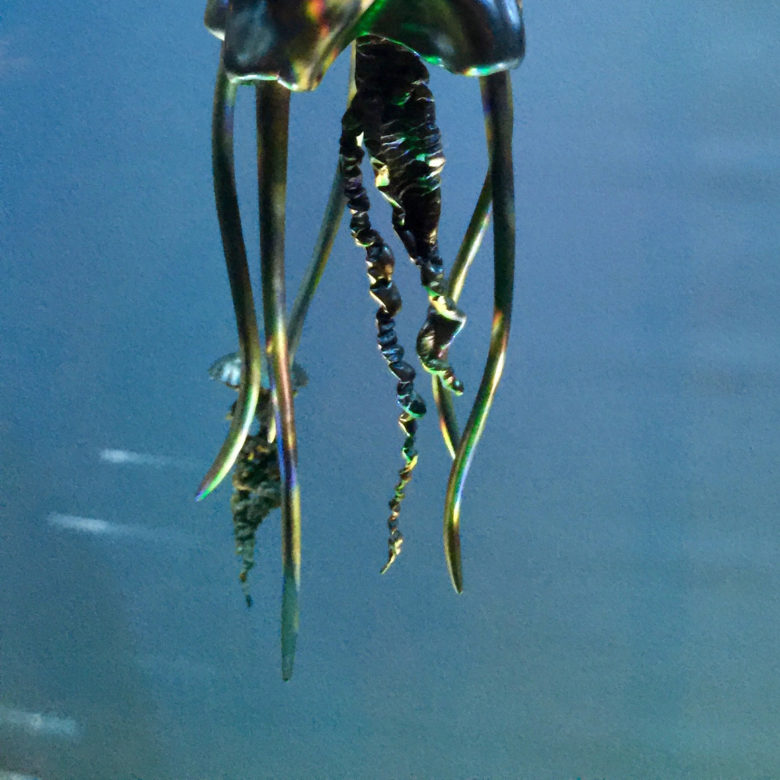
DAVID EISENHOUR
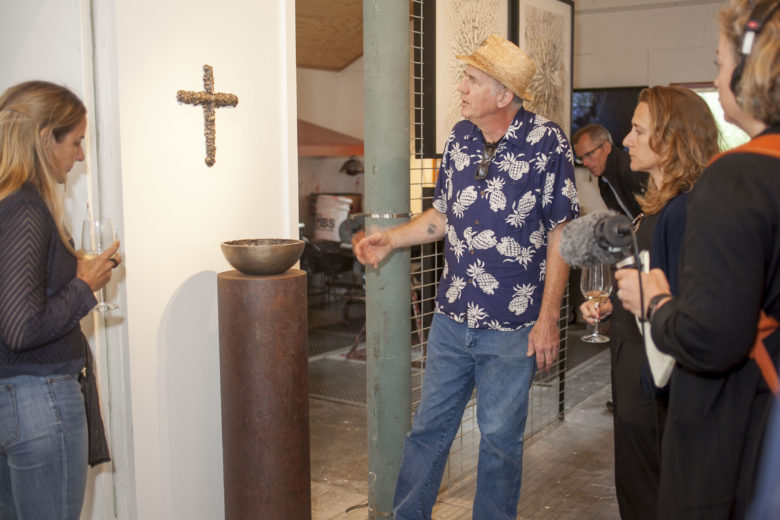
Artist David Eisenhour echoed the voices of others as he spoke on the importance of pteropods (marine snails) to the marine food web, and the devastating impact of OA on their survival. Due to changing conditions, the waters of Puget Sound can become too corrosive for pteropods and other marine life; their delicate calcium carbonate shells simply dissolve in the acidified seawater.
Inspired by the beauty and fragility of the pteropods, Eisenhour’s art connects people to the natural world, often at a scale needing magnification. His pieces challenge us to ask difficult questions about our impact on the world around us. With one, he prompted the Council to question, “Are we crucifying the ocean?”
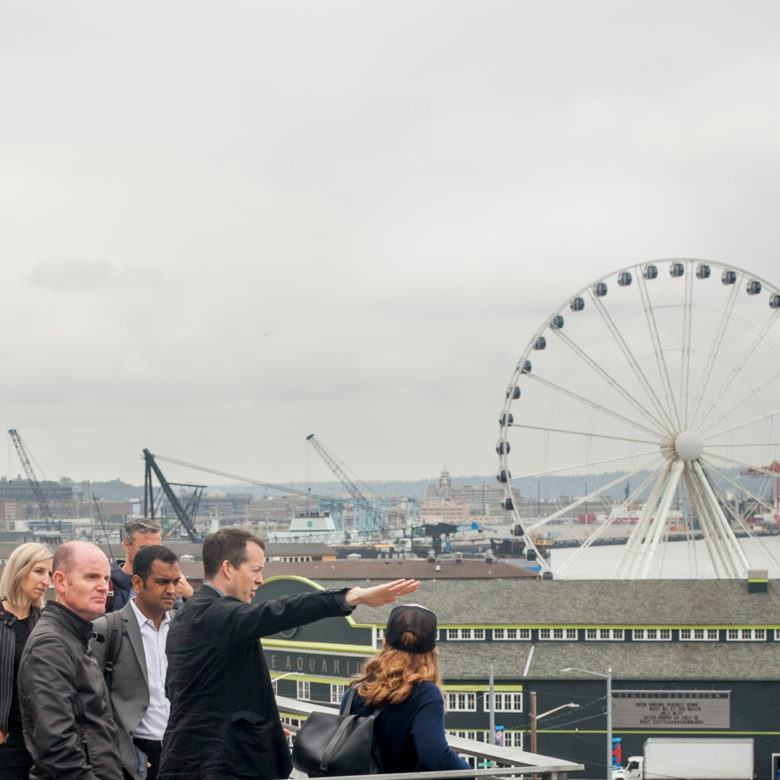
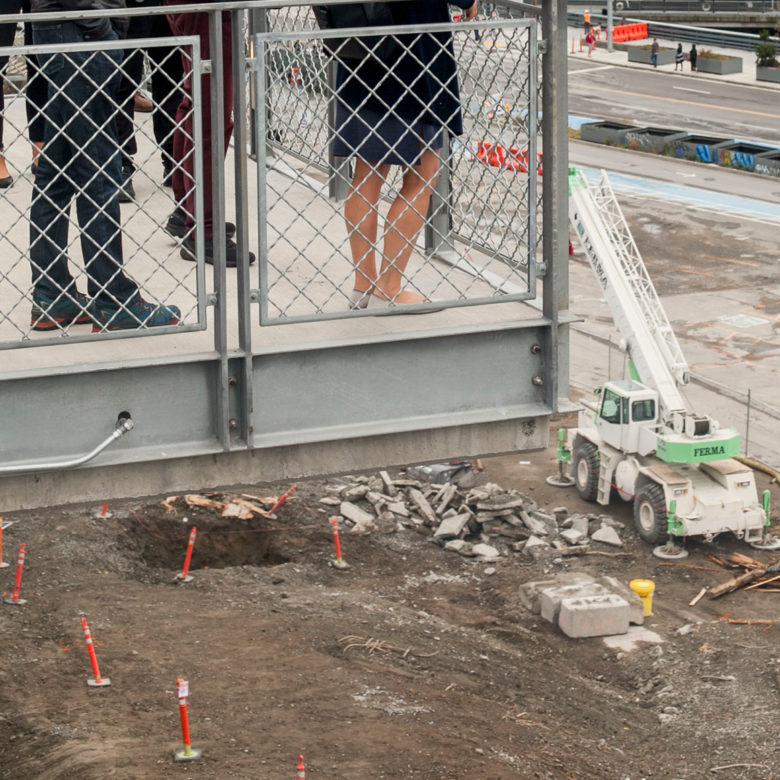
SEATTLE WATERFRONT
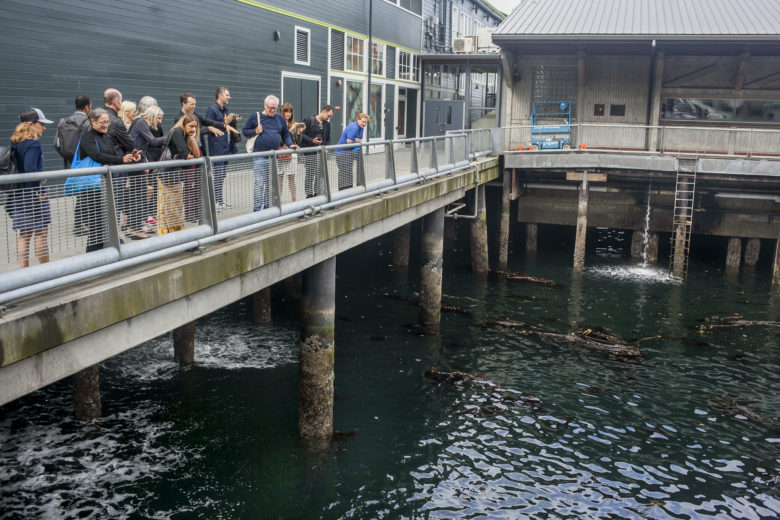
The last morning brought the Council back to Seattle, where they toured the waterfront’s drastic redesign, co-led by the City’s Waterfront Director Marshall Foster, and activist Cary Moon. The Council heard about the city’s efforts to restore its physical and cultural connection with the water.
Culturally-relevant, in the case of Seattle, often means one thing: salmon. Allison later deemed the waterfront as an example of ‘salmon-centered design.’ In the PNW, salmon act as a ‘sustainability integrator,’ bringing together the management of fisheries, marine and freshwater habitats, catchment land-use planning, food systems, nutrition and cultural connection to food and place. In the case of the waterfront, the new Seattle seawall was built to improve previously lost marine habitats, with a special focus on encouraging juvenile salmon migration. Thanks to a specially designed light-penetrating surface in the sidewalk above, young salmon are guided by natural light during their migration along the waterfront.
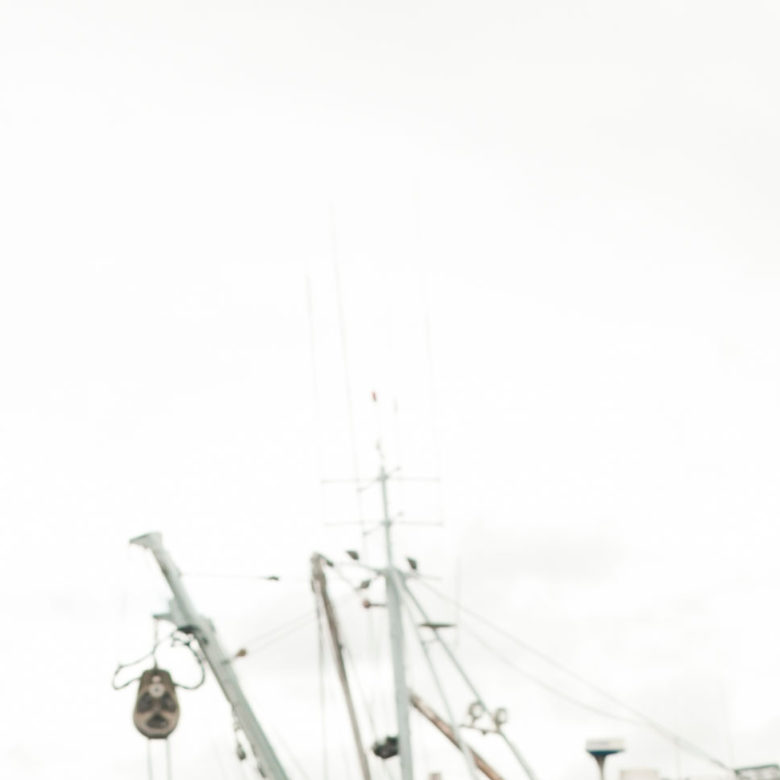
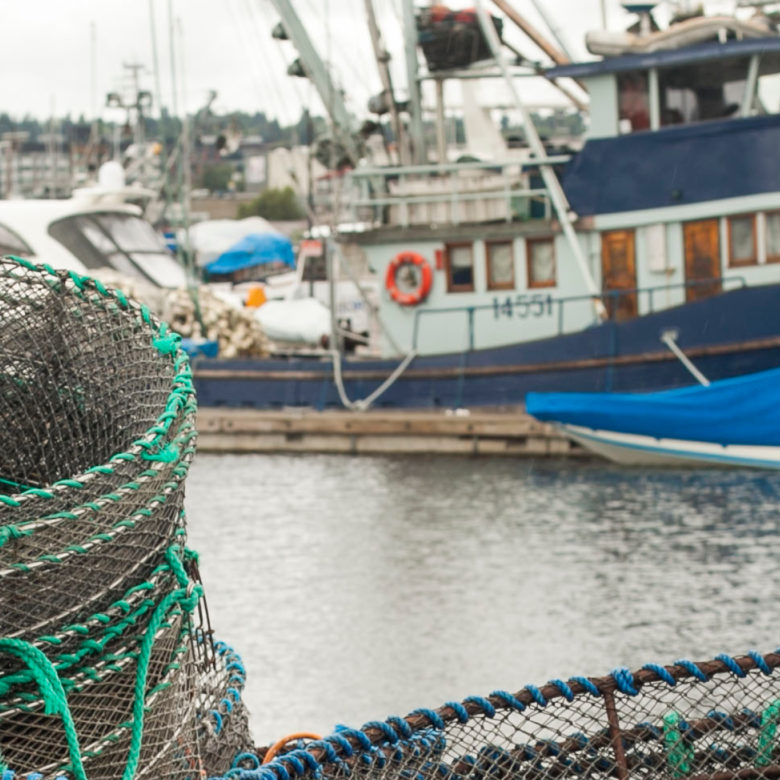
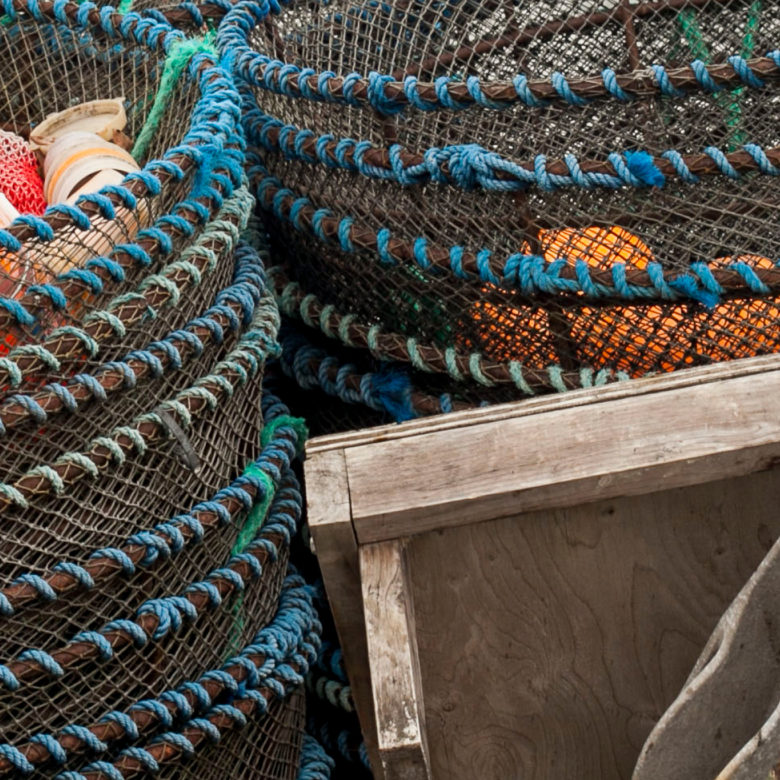
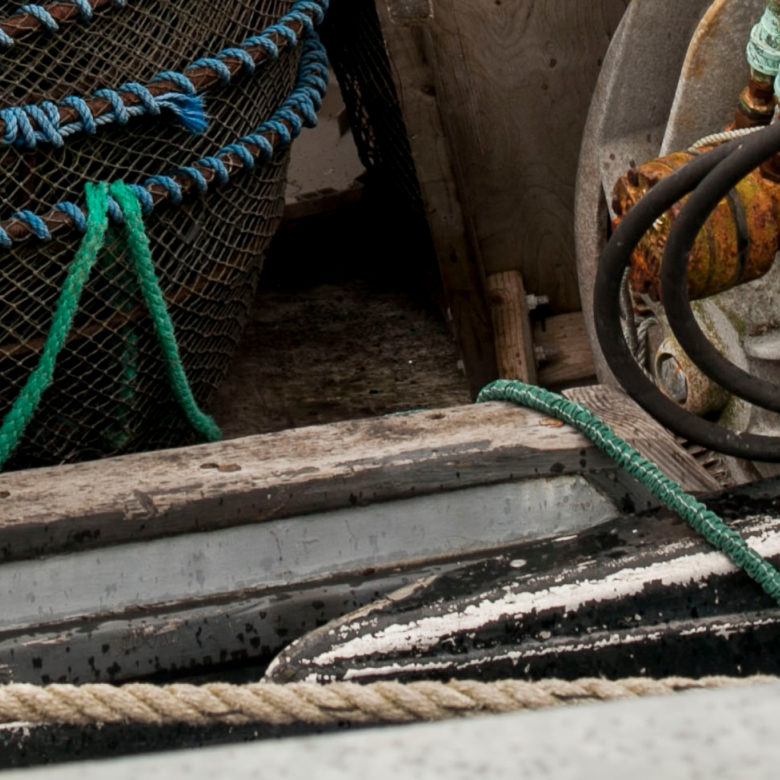
Following the visit to the Seattle waterfront, the Council returned to the University of Washington to debrief on the trip. Despite the complexity of the Puget Sound foodscape, the Council found themselves motivated to continue thinking about how to improve human life in the face of climate change and food insecurity. Themes seen in Sacramento were repeated, refined, and recontextualized in Seattle.
The Council had seen how the shellfish industry turned to innovative solutions to feed future human populations in the face of environmental change, including ocean acidification. This inspired the Council to consider how to redesign and rethink the future of food systems. Ideally, Allison hoped that alternative future would involve producing quality food rather than just “quantity food.” According to Allison, “If your focus turns to nutrition instead of quantity…that maybe starts to lower climate impacts.”
This challenge sparked a dialogue about the potential to decentralize food systems and focus on local, culturally-relevant foods like salmon and shellfish. The Council considered using the idea of a sustainability integrator to map the interconnectivity of food and climate impacts in a ‘foodscape.’ In this way, consumers could see how iconic local foods could be used as symbols and indicators to advance more sustainable ways of living in cities.
They also questioned whether the power for changing food systems lay in the intersection of academia and industry. One thing not up for question was the widespread knowledge of climate impacts in the Puget Sound region. This was a stark contrast to the Council’s previous trip to the San Joaquin Valley, where knowledge of climate impacts felt either optional or entirely nonexistent.
This integrated knowledge of climate change in the Puget Sound was perhaps due to the very real and personal impact it has already had on the people of the region. It was these first hand stories that resonated with the Council. One member found that, “At the end of the day, I love the salmon and all the fish, you know, but it really does come down to people…and how climate change is affecting them. [Tanya’s] whole tribe is having to move because of sea level rise. Those stories are the most important for us to hear and to relay to other people.”
Certainly, the story of seafood in the Puget Sound region is one fraught with climate vulnerabilities, but it is also one of many collaborative efforts by passionate and innovative people determined to see the seafood sector thrive far into the future. It will remain to be seen how members of the Council will use design to connect the built environment to the natural environment and tell the stories of the people that live, work, and play at that intersection. Surely the new knowledge and perspectives gained from this exploration in Seattle will inform their future personal and professional choices and allow them to shine light onto the topic of climate change and food security through their work.
LIST OF CLIMATE COUNCIL PARTICIPANTS
Claire Weisz (WXY Studio)
Mark Yoes (WXY Studio)
Bry Sarté (Sherwood Design Engineers)
Erik Verboon (Walter P Moore)
Mark Johnson (Civitas)
Steven Baumgartner (SmithGroup)
Barbara Wilks (W Architecture & Landscape Architecture)
Elissa Black (Van Alen Institute)
Pamela Conrad (CMG Landscape Architects)
Gary Sorge (Stantec)
GUESTS
Chris Devick (Smith Group)
Greg Otto (Walter P Moore)
Stacey Pennington (SLP Urban Planning)
Amy Whitesides (Stoss Landscape Urbanism)
Mark Yoes (WXY)
PARTNERS
Edward Allison (School of Marine and Environmental Affairs, University of Washington)
Amy Grondin (Sustainable Seafood Consultant)
Brittany Hoedemaker (School of Marine and Environmental Affairs, University of Washington)
